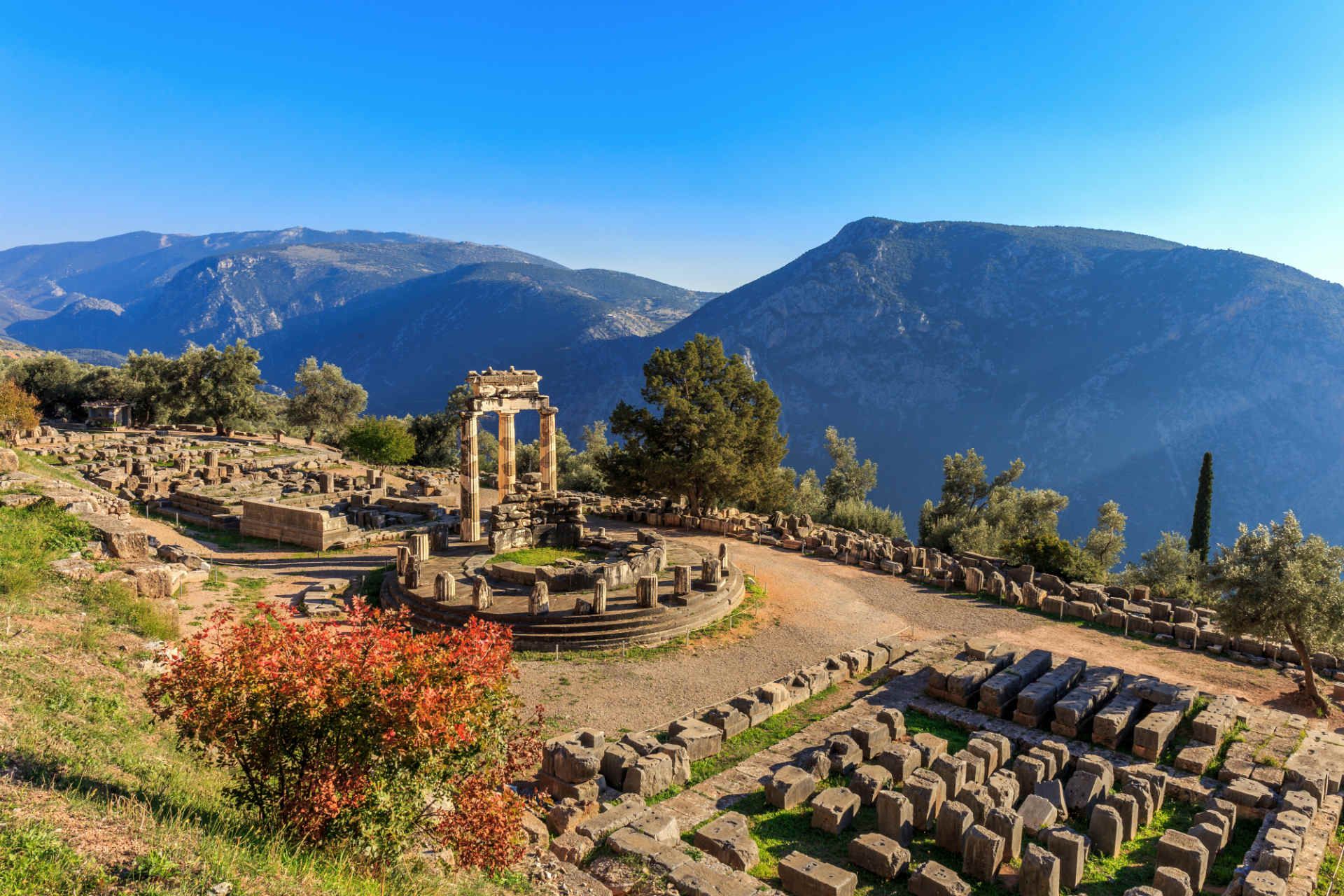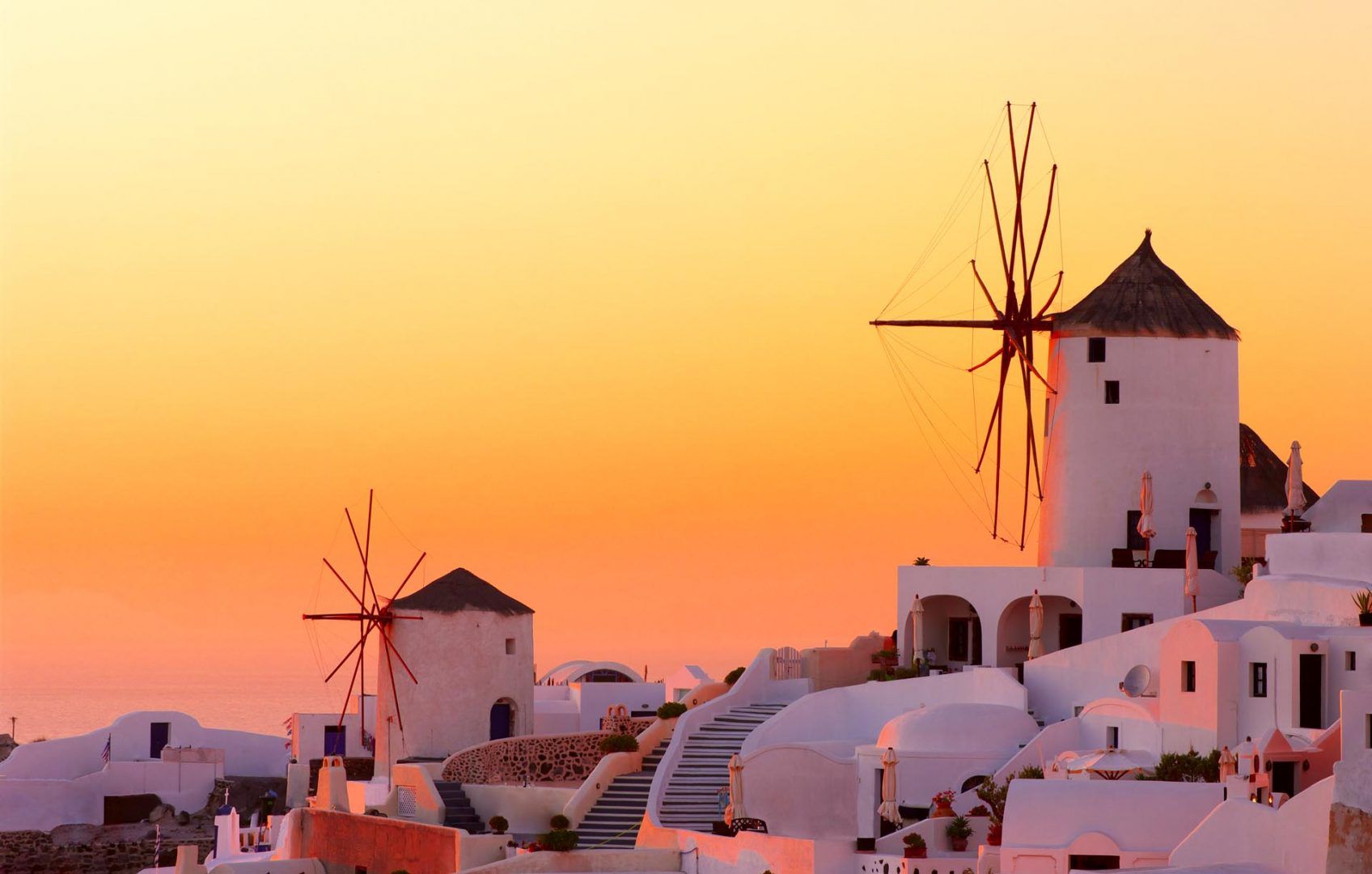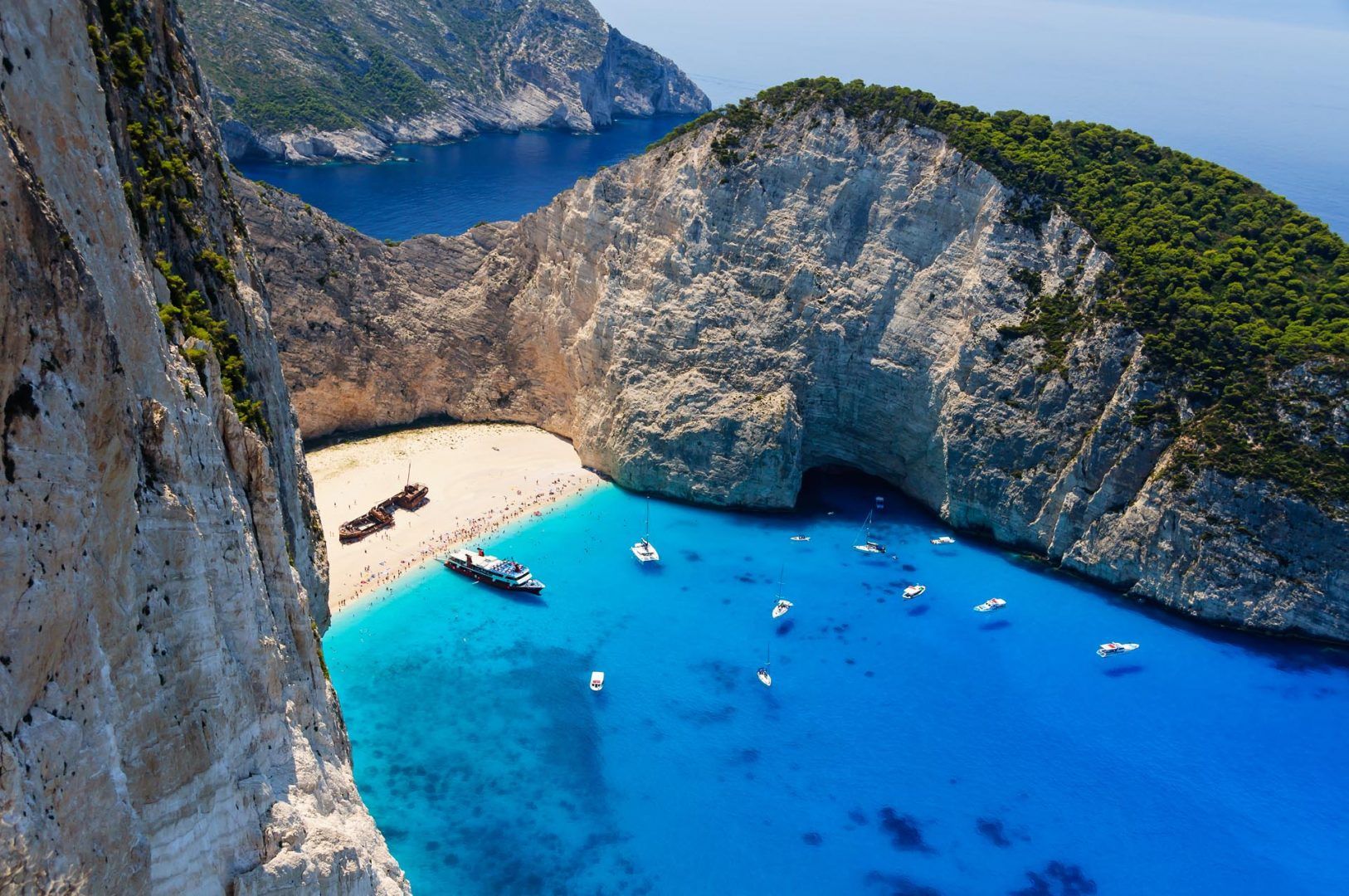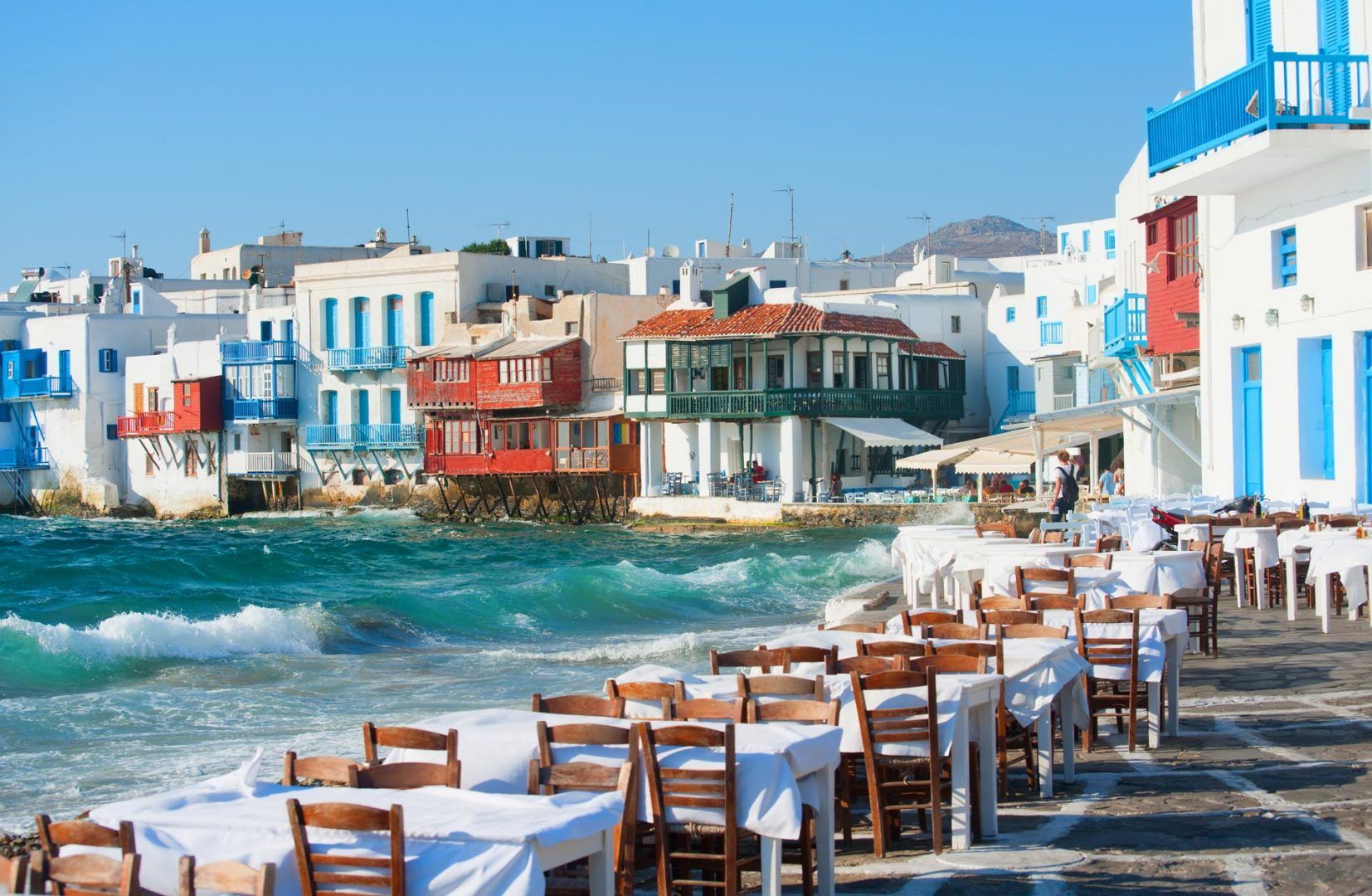Planning your own trip? Prepare for your trip
Use Rough Guides' trusted partners for great rates
Book your individual trip, stress-free with local travel experts
Plan your tailor-made trip with a local expert
Book securely with money-back guarantee
Travel stress-free with local assistance and 24/7 support
Kerry, USA
Rough Guides connected us with the most thoughtful local trip planning in Greece. We got a very personalized recommendation with adjustments as requested, ...
Read all reviews ⤍Greece remains a premier-league travel destination despite the battering its economy has received in recent years. Visit Greece and you’ll discover a country with incredible historic sites spanning four millennia, encompassing both the legendary and the obscure.
The Greek coastline is punctuated by superb beaches, while its mountainous interior urges you to dust off your hiking boots and explore. Yet perhaps its greatest riches are the Greek islands, ranging from backwaters where the boat calls twice a week to resorts like Santorini and Mykonos.
For anyone with a cultural bone in their body, Greece travel cannot fail to inspire. But the call to cultural duty will never be too overwhelming on a Greek holiday. The simple pleasures – swimming in balmy seas at dusk, talking and drinking under the stars, eating fresh, uncomplicated food – are just as appealing. Also, the genuine welcome you receive at the simplest taverna is enough to get you booking next year’s break as soon as you get home.
We published our first Rough Guide to Greece almost 40 years ago, but we’ll never tire of travelling there. Here’s our guide to a country that offers surprises and a sense of discovery to even the most demanding traveller (and head here for our top 15 general tips for travelling in Greece).
If you’re travelling around Greece as part of a bigger trip, Athens is a necessary stop. Home to a third of the population and the magnificent Acropolis, the Greek capital is a true metropolis.
Further north, Thessaloniki gives the capital a run for its money, with sophisticated restaurants, a buzzing nightlife and its own culture scene.
Don’t think the Greek islands hold the country’s only beautiful beaches: the long, sandy stretches of the Peloponnese are well worth a visit and easily accessible from the mainland.
Take the tourist road less travelled with a trip around the Central Mainland or Northern Mainland, with brilliant mountain hiking and trekking opportunities as well as tonnes of history and the all-important spectacular beaches.
The islands are really the jewel in Greece’s crown, though and a must when you visit Greece. Depending on how much time you have, it’s best to pick one group of islands to explore (or to sit back and relax on). The Argo-Saronic Islands, just a stone’s throw from Athens, are the perfect destination for multi-stop holiday.
Over on the west coast, you’ll find some of Greece’s most famous spots in the lush green Ionian islands, including Corfu and Kefalonia.
For easy island hopping, you can’t beat the beauty of the Cyclades. The size and close proximity of Santorini, Mykonos and co are ideal for a short stay on each.
Further north, the Sporades are easily navigable, with Skiathos an easy starting point thanks to its international airport. For a more authentic Greek atmosphere, the islands of the East and North Aegan are worth visiting.
Further southeast in the Aegean sea, you’ll find the Dodecanese islands. Here, Rhodes and Kos, two of Greece’s largest and most-visited islands, are the stars of the show.
If you don’t have time to spare, a stay on Crete just might give you everything you could want in a Greek island and more, with its top notch beaches, remote spots and friendly people.
Ready to explore Greece? Get started with our expert travel planning tips.

Ancient Delphi © elgreko/Shutterstock
As hoards of holiday makers can attest, Greek summers are hot, hot, hot. Travel to Greece in the mid-July to August peak season and you’ll find temperatures soaring into the mid 30s, along with crowds of tourists and domestic Greek holiday makers.
For the best weather without the crowds it attracts, June and September are lovely times to visit. May and October are worth a trip for the lower prices and Crete and the Cyclades are arguably at their best in May. Generally, though, you’ll find the weather less predictable and you might encounter some storms in October, particularly in the west or in the mountains.
From December to March during winter, you’ll find many amenities shut down, especially in resorts and on the islands. In the cities, of course, that isn’t an issue, while Rhodes and south eastern Crete are the warmest spots for some winter sun.
Find out more about the best time to travel to Greece.
Flying is the easiest way to get to Greece, with the country boasting no fewer than 15 international airports.
The most cost effective route is usually via the UK or other northern European hub such as Amsterdam or Frankfurt. If you’re starting in the US, there are direct flights to Athens from New York and Philadelphia.
If you’re travelling to one of the islands, taking a flight to Athens and catching the bus or ferry can be a cheaper route than flying direct. During winter it may be your only option, as direct flights to some islands only operate during the summer months.
For a more sustainable option, it’s possible to take the train to Greece from the UK. The journey takes around 2 days from London to Athens, or you could combine it with a bigger trip as part of an InterRail or Eurail pass.
Here’s all you need to know about getting to Greece.
Buses are plentiful all over Greece, and they’ll get you around all the primary routes on the mainland, with a more basic operation on the islands. To explore a bit further, you’ll need to hire a scooter, motorbike or car.
Driving in Greece can be a joy, thanks to spectacular mountain scenery and picturesque coastal roads – just remember to drive on the right. The train system, meanwhile, is limited and is often a slower option than taking the bus.
Island hopping means boat trips, though it’s sometimes worth forking out for internal flights to get you from Athens to a starting point on the group of islands you want to explore. Athens to Rhodes is just a two-hour flight, for example, but 28 hours by boat.
Here’s our full guide to getting around Greece.

Sunset at Oia on Santorini island © DigitalHand Studio/Shutterstock
Delphi – journey to the centre of the earth
The Ancient Greeks considered Delphi to be the centre of the earth — and upon visiting, it’s not hard to see why. Located in an unbeatable natural setting at the foot of Mount Parnassos in the Central Mainland, this ancient site has retained its mystique through the centuries. It’s even more stunning in spring, when wild flowers bloom all over the valley.
See the sunset on Santorini island
Watching the sunset across Santorini’s famous caldera is up there on most lists of things to do before you die. Most tourists make for Oia, but the sunset views from Akrotiri on the island’s southwestern tip are better and far less crowded.
Snap a selfie at Shipwreck Bay
You can’t visit Zakynthos without paying a visit to the beach that’s become the poster child for the whole of Greece. Navagio, better known as Shipwreck Bay, has a spectacular cliff drop, white sands, turquoise waters and – you guessed it – its very own shipwreck. Beaches don’t get much prettier than this.
Climb Mount Olympus
If you’ve got basic hiking skills, put them to good use when you visit Greece with a trek up Mount Olympus, mythical abode of the Gods, in the Northern Mainland. To make the most of the mountain, allow two to three days hiking. The small town of Lithoro on the east of the mountain is by far the best place to base yourself.
Kick back in the Pelion
Billed as the Greek Tuscany, the Pelion Peninsula in the Central Mainland has it all: lush countryside, excellent beaches, cute villages and good trekking. You’ll find the best walking seasons are late April to early June and early September to October.
Explore the Acropolis and beyond in Athens
The magnificent Acropolis looms over Athens, dominating almost every view. Of course, you must get your Classical Greek fix with visits to the Parthenon and Athens Archeological Museum. But don’t miss out on modern Athens: take some time to explore the city’s neighbourhoods and you’ll escape the crowds and experience the Athens that modern Athenians know and love.
Party on Mykonos
Shelve your ideals of a peaceful Greek holiday and join in the fun on Mykonos, where the beaches are lovely and lively and the nightlife is second to none. Don’t forget to get lost in Mykonos Town, where the maze of narrow streets form the quintessential image of the Cyclades.
Rough Guides tip: To get the best Mykonos experience, choose the right place to stay with our guide to the best places to stay in Mykonos.

Navagio, or Shipwreck bay, Zakynthos © Michail Makarov/Shutterstock
There are countless ways to travel Greece. To help you narrow it down, we’ve put together four possible routes which should each last around two weeks.
There’s Classical Greece, where each stop will reveal something new about one of the world’s greatest civilisations. Or stick to the beaches with Island-Hopping in the Cyclades, the best group of islands to travel between thanks to quick and frequent ferry links.
Stay (mostly) on dry land with Cretan Odyssey to experience Crete beyond the beach resorts. And for a completely different look at Greece, take The Road Less Travelled, a journey through northern and central Greece that rarely appears on travel agents’ radars.
There’s an itinerary to suit you, whatever you want from your Greece trip. Take a look at all our Greek itineraries here.
You’ll find accommodation in Greece to fit whatever budget you’re on, though prices will vary depending on the time of year you travel. High season in July and August and during Easter are the busiest times, when you’ll definitely need to pre-book a place to stay.
As well as the usual offering of hotels, hostels, apartments, villas and private rooms, a few nights in a monastery or convent is not out of the question. Here’s our full guide to accommodation in Greece, including an explanation of the different hotel categories and our pick of some of the best places to stay in Greece.
Sampling the local cuisine is a highlight of any trip, but in Greece especially so. Greek food is wide-ranging and delicious and restaurants (tavernas) are straightforward and good value.
Can’t decide where to dine? Go where the Greeks go. Mezedhes like tzatzíki and souvláki and chops are always reliable choices, while seafood can be one of the highlights of a trip to Greece. A proper Greek gyros pitta, stuffed with lamb, tomatoes, onion, salad and a few fries, may just be the greatest fast food ever invented.
Ouzo is synonymous with Greece, but Greek tipples go beyond the anise-flavoured aperitif. Many of the islands, including Santorini and Rhodes, are wine producers, so you’ll have a chance to sample local bottlings (and tour a vineyard or two if you like). And don’t miss out on a cup of strong, sweet Greek coffee at a kafenío, a traditional Greek coffee-house.
If that’s whet your appetite, read more about food and drink in Greece.

Mykonos © Ella Hanochi/Shutterstock
The Greek seashore offers endless scope for watersports, from waterskiing and parasailing to yachting and windsurfing. Waterski boats spend most of their time towing people around on inflatables, though you usually can waterski or wakeboard as well, while parasailing is also on offer at all the big resorts. Jet skis can be rented in many places, too.
Windsurfing is hugely popular around Greece. The country’s bays and coves are ideal for beginners, with a few spectacularly windy spots for experts. Renting a board isn’t too pricey, while instructors are usually available.
Some of the best windsurfing spots including Vassiliki in Lefkada, Santa Maria in Paros, Prassonissi in Rhodes, Kokkari in Samos, Kouremenos in eastern Crete and Karathonas in the Peloponnese.
A combination of steady winds, beautiful seascapes and many natural harbours make Greece a tremendous place for sailing. All sorts of bareboat and flotilla yacht trips are on offer, while dinghies, small cats and motor boats can be rented at many resorts.
For yachting, spring and autumn are the most pleasant seasons. Winds can make for nauseous sailing in July and August, when you’ll also find far higher prices and crowded moorings.
Our sailing picks? Explore the Sporades from Skiathos; set out from Athens for the Argo-Saronic islands and north Peloponnese coast; or sail around Corfu and the Ionian.
You’ll find some dive centres across the mainland, Dodecanese, Ionians, Cyclades and Crete. Generally, though, diving is pretty restricted because of the potential for stealing submerged antiquities. There’s not a huge amount of aquatic life, but you do get wonderfully clear water, while the rocky coast offers plenty of caves and hidden nooks to explore.
If you have the time and stamina, walking is probably the single best way to see the remote Greek backcountry, with plenty of options from gentle strolls to long-distance mountain paths through one of Europe’s most impressive mountain terrains. Spring and autumn, when its cooler, are great for walking.
Cycling is less popular with Greeks, but in an increasing number of resorts you can hire mountain bikes, and many of the rental places lead organized rides. They vary from easy jaunts around the countryside to serious rides up proper mountains. Summer heat can be fierce, but spring and autumn offer great riding conditions.
From travel safety to visa requirements, discover the best tips for visiting Greece
Whether you’re the kind of person who likes to be well prepared for every eventuality, or you’re more of a turn-up-and-see-what-happens kind of traveller, our guide to Greece travel essentials is well worth a browse. It will give you an idea of what things will cost while you’re in Greece, what entrance fees you can expect to pay to tourist sites, where you’ll find all the embassies, useful Greek phone numbers and lots more.
UK and all other EU nationals need only a valid passport to enter Greece. US, Australian, New Zealand, Canadian and most non-EU Europeans can stay, as tourists, for ninety days in any six-month period.
Non-EU nationals arriving by plane or boat from another EU state not party to the Schengen Agreement might not routinely have their passport stamped at minor Greek ports, so make sure this is done in order to avoid unpleasantness on exit. Your passport must be valid for three months after your arrival date.
Visitors from non-EU countries are currently not, in practice, being given extensions to tourist visas. You must leave not just Greece but the entire Schengen Group and stay out until the maximum 90-days-in-180 rule is satisfied.
If you overstay your time and then leave under your own power – ie are not deported – you'll be hit with a huge fine upon departure, and possibly be banned from re-entering for a period of time; no excuses will be entertained except (just maybe) a doctor's certificate stating you were immobilized in hospital. It cannot be overemphasized just how exigent Greek immigration officials have become on this issue.
Entry requirements can change, so always check with your local embassy/consulate for the most up-to-date information before travel.
Top image: The Parthenon on The Acropolis, Athens © Lucky-photographer/Shutterstock
A high proportion of the ancient sites still seen in Greece today were built as shrines and temples to the gods, primarily the twelve who lived on Mount Olympus. Zeus, the lord of the heavens and supreme power; Hera, his wife and sister, goddess of fertility; Athena, the goddess of wisdom, patron of crafts and fearless warrior; Apollo, the god of music, of prophecy and the arts; his sister Artemis, the virgin huntress and goddess of childbirth; Poseidon, the god of the sea; beautiful Aphrodite, goddess of love and desire; Hermes, the messenger who leads the souls of the dead to the underworld; Hephaestus, the god of craftsmen; Ares, the god of war; Demeter, the goddess of crops and female fertility; and Dionysus, god of wine and intoxication. Worshipped, feared and admired, they formed the basis for the ancient Greek religion until paganism was banned by the Romans in AD 391.
Use Rough Guides' trusted partners for great rates
written by
Rough Guides Editors
updated 19.05.2021